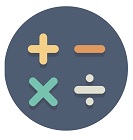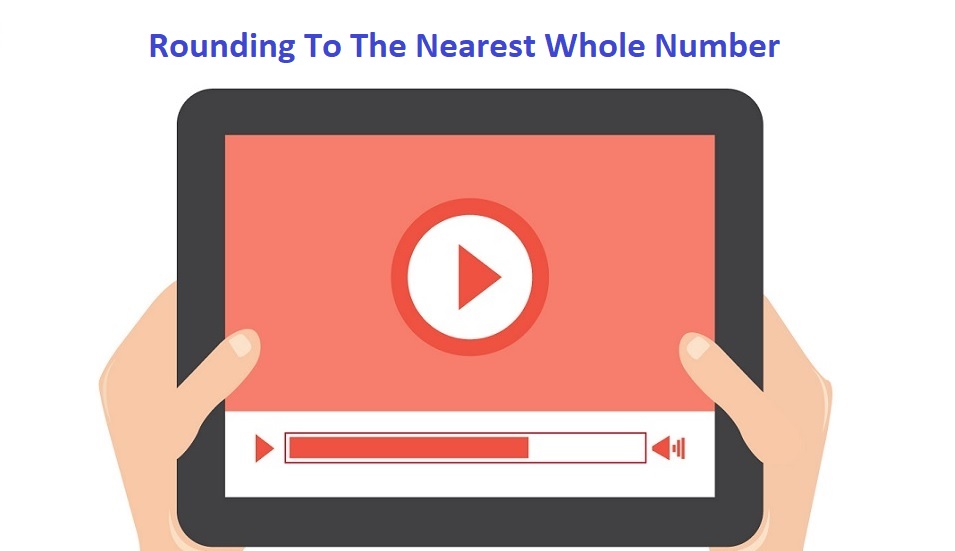In this text, we will talk about the approach and procedure related to rounding to the nearest whole number. This procedure is the most specific of all those related to rounding any type of numeric value entry, to any place value. This procedure answers your need to complete rounding to the nearest dollar in all those everyday situations where you have a practical need for this procedure. Of course, rounding to the nearest whole number has its application in many other everyday situations related to money or business. On the other hand, if you do not round to the nearest dollar correctly, in a situation where you buy or sell several products or services at once, you may make a serious mistake that is very difficult to correct later.
So let’s solve this simple situation so that we don’t put ourselves in an awkward position when it’s our turn to decide on rounding to the nearest dollar.
Below in the text you can see many examples of rounding to the nearest whole number in text and video form. Read the text examples, watch the video examples and we guarantee that you will leave this problem behind once and for all! Let’s get started!
How To Round To The Nearest Whole Number
When performing this type of rounding (which is much easier than the same process for decimal numbers), we should always be focused only on the exact value of the place value of the tenths of the decimal number we are considering. In doing so, we pay attention to the following two different situations:
If the value of the tenths is in the range of digits from 0 to 4, then when rounding the integer value of the decimal number we do not change it at all (the part of the numerical value that is to the left of the decimal point remains the same).
If the decimal value is in the range of digits from 5 to 9, when rounding the integer value from the decimal number, we add +1 (the part of the numerical value that is to the left of the decimal point is increased by one).
The rules are very simple, but let’s see two real concrete examples that will show us how to practice the above rules on a real example in a real situation.
Rounding Examples
Example 1: Round the numerical value to the nearest whole number:
346.4
It is immediately noticeable that in the given number above the digit that is in the tens place is the digit 4. Because the digit 4 belongs to the range of numbers from 0 to 4 (see rule number 1), the integer value that is to the left of the decimal point does not we change it. Therefore after the final rounding, we can simply write:

Let’s consider another example that concerns a number that belongs to the group of numbers for which the second rule applies. See the second example below:
Example 2: Round the numerical value to the nearest whole number:
1763.6
It is immediately noticeable that in the given number above the digit that is in the tens place is the digit 6. Because the digit 6 belongs to the range of numbers from 5 to 9 (see rule number 2), the integer value that is to the left of the decimal point is we increase by one (+1). Therefore after the final rounding, we can simply write:

And finally, let’s see a third example in which we will apply the rules indicated above in the text if we want to use these same rules to complete the rounding procedure to the nearest dollar!
Example 3: Round to the nearest dollar!
$14.58
In the value expressed in dollars, the decimal place is the digit 5. That digit belongs to the digits that belong to the range of digits 5 to 9. Therefore, when rounding to the nearest dollar, we will increase the integer value by one (+1) . We can write the rounding notation as follows:

When To Round Up
In this last example, it is clear that rounding is a very important procedure if you want to use it when purchasing certain products. Obviously in the last example above (example number 3), it is clear that the value of the money when rounded up increases by 42 cents. This shows that if you are the one buying 1000 products with a rounded amount of money then you will practically lose $420 on the trade. But if you are the one selling, then you will earn an additional $420. Therefore, be careful in which situation you practice rounding to the nearest dollar, and when you avoid that procedure!
As can be determined from the text and examples shown above, rounding to the nearest whole number is a pretty important mathematical calculation that we need to be careful with how we use it!
Video Examples
Check out the additional video examples of rounding to the nearest whole number that we have prepared for you, our readers!
We hope that you liked our materials that we carefully prepare for you. If that’s the case, take the opportunity to connect with our social media pages. These pages of ours will present you with new content continuously in the near and distant future! All the best!





